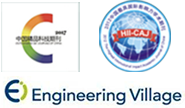Abstract:
In this study, four types of powders, including zinc oxide (ZnO), Al-doped ZnO (Al
0.12Zn
0.88O), and Al, Li-co-doped ZnO (Al
0.12Li
0.03Zn
0.85O, Al
0.12Li
0.05Zn
0.83O), were prepared using the sol-gel-combustion method. These materials were characterized using XRD, XPS, EPR, SEM, TEM, EDS, PL, and UV-Vis analysis methods, and their photocatalytic degradation effects and physicochemical stabilities were investigated. To further understand their properties, theoretical calculations of lattice constants and density of states were performed using density func-tional theory-based ab initio quantum mechanics software. The results showed that all four powders exhibited a single hexagonal wurtzite phase, as confirmed by XRD. Among them, Al
0.12Li
0.05Zn
0.83O was shown in TEM to exhibit a core-shell structure of Al
2O
3-coated doped state ZnO, with a particle size of 20.03 nm and the interplanar spacing of the crystal was 263.6 pm, which matched the 263.8 pm calculated from XRD. Under 45 min of light exposure, the efficiency of Al
0.12Zn
0.88O in catalyzing the degradation of methylene blue solution (MB) was 29.31%, which was significantly lower than that of ZnO at 76.76%. In contrast, Al
0.12Li
0.03Zn
0.85O and Al
0.12Li
0.05Zn
0.83O showed enhanced efficiencies of 85.56% and 96.99%, respectively. After five cycles and 75 min of light exposure, the efficiencies of Al
0.12Zn
0.88O and ZnO decreased to 25.26% and 23.71%, while the latter two maintained efficiencies of 77.33% and 80%. The excellent photocatalytic performance of Al and Li co-doped ZnO is attributed to the following factors: On the one hand, Al doping can increase the oxygen vacancies for the doped ZnO, which can improve the photocatalytic efficiency as the active center of photocatalytic reaction. Li doping can refine the grains, improve the dispersion of the catalyst, and promote the formation of core-shell structure. On the other hand, the encapsulated Al
2O
3 layer protects the doped ZnO, which effectively extends the catalytic lifetime.


 下载:
下载: